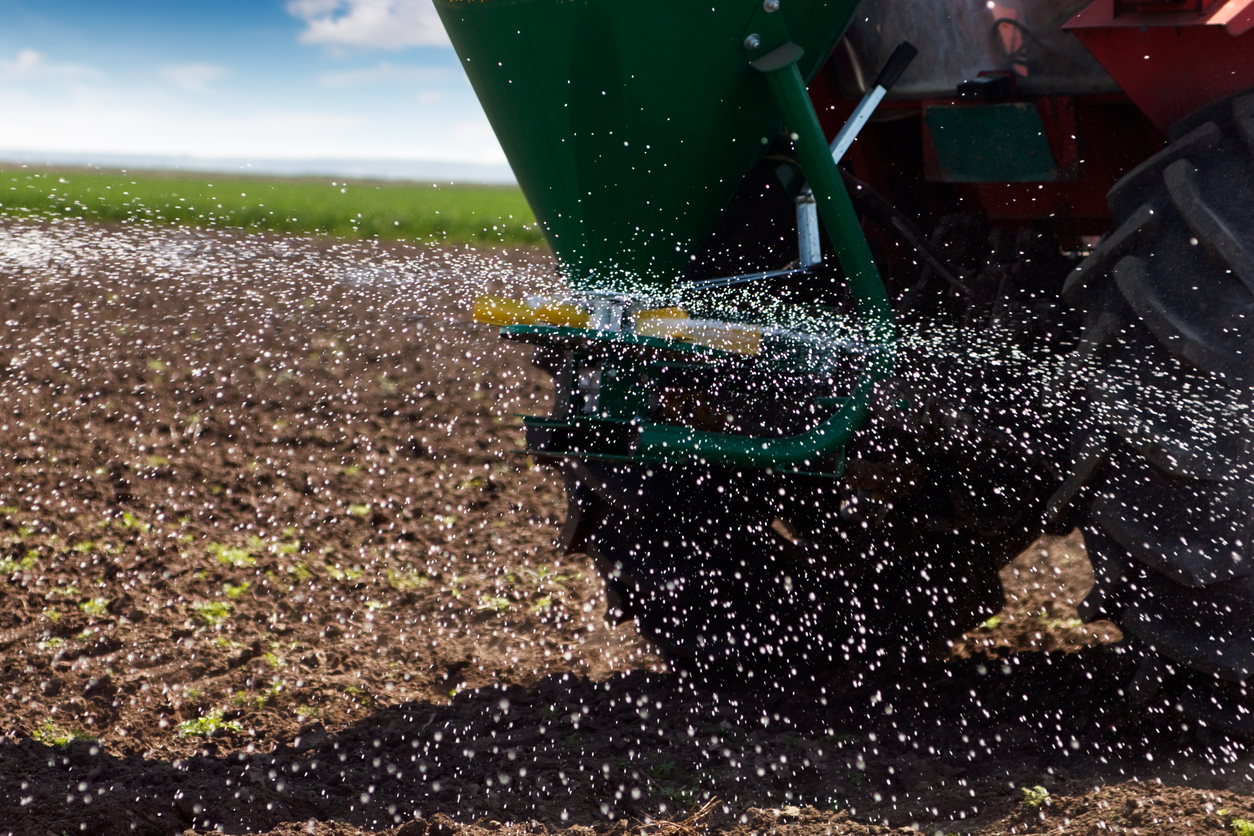The 4 Rs Concept: Right Rate, Right Place, Right Source, Right Time
The 4R’s concept is being promoted by Ohio State University extension and other government agencies. The 4R’s concept means using the right fertilizer source at the right rate, right time, and the right place (Fertilizer Institute). The goal is to keep the nutrients on the land and not in the air or water while increasing agricultural production and profitability. That requires matching nutrients applied with nutrients taken up by the plants while minimizing losses. For more information on this concept visit the Fertilizer Institute website at nutrientstewardship.com.
Using the right fertilizer rate starts with knowing your crop nutrient requirements. The right rate should be based on soil and tissue tests taken from an accredited laboratory and should be based on Tri-state agronomic fertilizer guidelines. Soil tests should be taken a minimum of every three to five years. A study of agricultural testing laboratories found that while a majority of laboratories were testing and reporting nutrient levels correctly; their guidelines for the amount of fertilizer to apply were vastly different. So in many cases, fertilizer was being recommended when it was not needed (Mullen and Dayton, 2011). Farmers need to keep good fertilizer records to see how their soil tests change over time.
The right fertilizer source means adjusting for the purity and the solubility of the product. Many companies are using products like Avail or Jumpstart with P fertilizer. These products increase the solubility making them more plant available but also easier to lose. With fewer impurities the fertilizer nutrient content increases. Plants take up soluble nutrients but unfortunately that increases the chance of surface water runoff.
Putting fertilizer in the right place means either injecting or incorporating the fertilizer into the soil. If the fertilizer is surface applied, it should be applied to a growing crop. This will require some changes in the way fertilizer is applied. Farmers typically apply phosphorus (P) and potassium (K) broadcast in the fall before planting crops in the spring. While some starter fertilizer is applied on corn in row in the spring, the majority of P and K fertilizer is broadcast in the fall. Current recommendations are to either incorporate the fertilizer or apply it to a live crop like a cover crop to minimize surface runoff. Utilizing no-till and cover crops will allow the fertilizer to soak into the soil when it rains or be absorbed before runoff occurs.
Applying fertilizer at the right time means not applying fertilizer or manure to frozen or snow cover soil. The recommendation is to apply fertilizer or manure to growing crops or when the crops will need the nutrients to minimize losses. Incorporating or banding fertilizer at planting time is the preferred method of fertilizer application. Do not apply before a projected heavy rainfall or precipitation event like melting snow. Frozen and snow covered applications have the greatest risk of off-site movement whether manure or commercial fertilizer (LaBarge, 2012). About 90% of the nutrients are lost each year during major rainfall events (2 inch rains or greater) or during snow melt (Sharpley, 2012).
What other practices can farmers do to minimize P losses? Farmers should continue to utilize proper best management practices like soil conservation. Avoid plowing and tilling the soil and utilize no-till or minimum till with at least 30% residue cover. Protecting the soil with residue increase water infiltration and allows the nutrients to contact the soil particles where it may be absorbed and available for plant uptake. Using cover crops will improve soil health and nutrient retention and recycling. Most major and minor soil nutrients are tied up in an organic form and are less susceptible to runoff. Filter strips, grass waterways, buffers, and wetlands are encouraged to treat and filter out nutrients before it reaches our rivers and lakes.
Other practices that farmers can adopt include repairing and fixing broken tile lines quickly before the soil erodes and nutrients are lost. Surface inlets should be protected with a plastic cover to prevent surface runoff. A majority of the nutrients are in the top 1 to 2 inches of topsoil. When the soil erodes, the sediment that is lost is composed of the richest soil, the soil organic matter which tends to float and to be easily transported to surface water. Concentrated surface runoff should be treated if possible before entering a stream. Nitrogen and phosphorus bioreactors situated in tile outlets have been shown to reduce nutrient losses by 70 to 90% (Brown, 2011). Controlled drainage structures which hold back the water during the winter have shown similar results (Brown, 2011)
